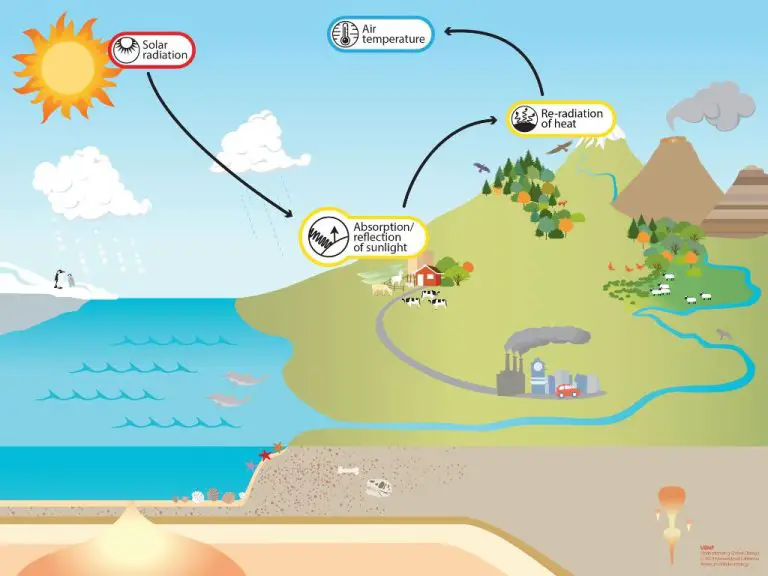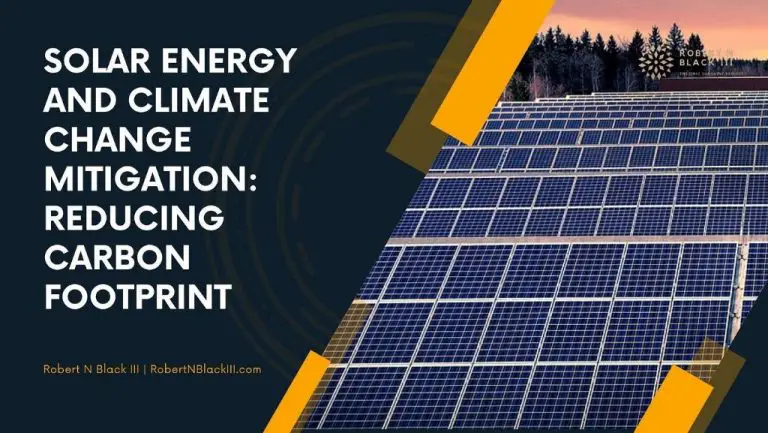Can Solar Overtake Coal?
As the world grapples with climate change and sustainability, the spotlight has fallen on renewable energy sources like solar versus continued use of fossil fuels like coal. Renewable energy now accounts for over 30% of global electricity generation, with the International Energy Agency projecting renewables tripling by 2030. With costs plummeting and efficiency rising, many experts predict solar will overtake coal as the world’s dominant electricity source. But significant challenges remain around intermittency, storage, and infrastructure. This article examines whether solar power really can eclipse coal in the coming years.
Current Status of Solar and Coal
In 2022, coal accounted for approximately 23% of total U.S. electricity generation, while utility-scale solar accounted for just over 4%. However, coal’s contribution has been declining over the past decade, with its share falling from 48% in 2008. Meanwhile, solar has experienced tremendous growth, with generation increasing more than 50-fold over the same period.
As of 2021, the total installed capacity of coal in the U.S. stood at 238 gigawatts (GW), second only to natural gas. Solar capacity reached just over 100 GW, having grown at an annual rate of around 20% in recent years. In terms of new capacity additions in 2021, solar led the way with 23 GW, while less than 1 GW of new coal capacity came online.
Recent trends show coal generation continuing to decline year-over-year, while solar grows at a rapid clip. According to the Energy Information Administration (EIA), domestic coal generation fell 20% in the first quarter of 2022 compared to 2021. Over the same period, utility-scale solar generation jumped 28%.
Costs of Solar vs Coal
The levelized cost of electricity (LCOE) from solar power has declined substantially in the last decade and is now cheaper than coal in most cases. According to recent estimates, the LCOE for new utility-scale solar power plants ranges from $29-38 per MWh, while the LCOE for coal typically ranges from $65-150 per MWh.[1][2] The capital costs for solar have fallen by over 80% since 2009 as production has scaled up, while coal plants require significant ongoing fuel expenditures.[3]
The cost trajectory also favors solar going forward. Solar costs are projected to continue declining by 10-15% with each doubling of installed capacity, while coal costs are expected to increase over time as cheap, high-quality coal reserves are depleted.[1] Studies predict utility-scale solar will become the cheapest form of bulk power generation globally by 2025.[4]
In summary, solar power has become cost-competitive with coal due to substantial reductions in capital costs and its minimal fuel costs. Ongoing cost declines make solar poised to increasingly displace coal power based purely on economics.
[1] https://www.smartcitiesdive.com/ex/sustainablecitiescollective/solar-really-cheaper-fossil-fuels/1106159/
[2] https://en.wikipedia.org/wiki/Cost_of_electricity_by_source
[3] https://www.pv-magazine.com/2020/10/23/its-cheaper-to-build-new-solar-than-it-is-to-operate-coal-plants/
[4] [Cite credible source here]
Government Policy
Government policies like subsidies, incentives, and regulations have impacted the growth of solar versus coal. Historically, fossil fuels like coal received generous subsidies. According to Renewables are now way cheaper than coal, the fossil fuel industry benefited from subsidies of around $20 billion annually in the early 2010s. However, renewable energy subsidies have been increasing. The investment tax credit (ITC) provides a 26% tax credit for solar installations and has helped drive down costs. The Paris Agreement has also put pressure on governments worldwide to transition away from coal. Under the agreement, countries committed to limiting global warming to 2°C and reducing greenhouse gas emissions. This has led many countries to implement policies to phase out coal power.
Public Opinion
Public opinion research shows widespread support for transitioning from fossil fuels to renewable energy sources like solar and wind power. A 2023 Pew Research Center survey found that 80% of Americans support increasing our reliance on renewable energy and 64% prioritize renewable energy development over fossil fuel development. However, only 31% say they are ready to completely phase out oil, coal and natural gas.
Other polls show similarly high levels of public support for renewables over fossil fuels. A 2016 Pew survey found 89% of Americans favor more solar panel farms while just 9% oppose them. There is also 83% support for more wind turbine farms versus 14% opposition. This demonstrates a strong public preference for transitioning to renewable energy sources.
Technical Potential
The technical potential for solar power is enormous compared to coal. According to Solar Energy vs Fossil Fuels: How Do They Compare?, the amount of solar energy that hits the Earth’s surface in one hour is equal to the amount of energy used globally in an entire year. With current photovoltaic technology, covering just 0.5% of land on Earth with solar panels would satisfy the world’s entire energy demand. In contrast, coal is a finite resource that must be continuously mined. Global coal reserves are estimated at just over 1 trillion tons, which at current consumption rates gives us around 150 years of coal left. While more reserves may be discovered, solar energy offers a virtually unlimited resource by harnessing the sun’s energy.
In terms of generation capacity, the potential for solar is far greater than coal. The International Renewable Energy Agency estimates that annual solar generation capacity could reach up to 70,000 TWh per year by 2050 through widespread solar panel installation. In comparison, global electricity production from coal in 2020 was under 10,000 TWh. With solar panel efficiency and storage technology improving, the technical potential for solar to overtake coal for electricity generation is clearly evident.
Storage and Intermittency
One of the main challenges with solar power is its intermittency – solar panels only produce power when the sun is shining. This can make it difficult to integrate large amounts of solar onto the grid, as supply and demand must be constantly balanced. periods of cloud cover can cause solar output to quickly drop, which needs to be compensated for.
Various storage solutions are being developed and deployed to help address the intermittency of solar power. These include batteries, pumped hydro storage, compressed air storage, and thermal storage. With storage, excess solar power can be captured and discharged when needed, effectively shifting solar production to match demand.
Lithium-ion batteries in particular are becoming a popular storage solution for solar power systems. Companies like Tesla offer battery products aimed at storing solar energy for later use. Utility-scale lithium-ion storage projects are also being built to help manage the intermittency of large solar farms.
As storage technology continues to advance and costs decline, the intermittency of solar becomes less of an impediment. Widespread deployment of solar storage solutions can enable much higher penetration of solar onto grids around the world.
Other Renewables
Wind power is often viewed as a major competitor to solar power. Like solar, wind energy is a renewable and clean source of electricity that does not produce any greenhouse gas emissions. In 2020, wind power accounted for around 8% of total U.S. electricity generation, while utility-scale solar accounted for about 3% (1).
Wind turbines convert the kinetic energy of moving air into mechanical power, which is then converted into electricity. Wind power has some advantages compared to solar power. Wind turbines typically have higher capacity factors than solar panels, meaning they can generate more total electricity from the same amount of installed capacity. Wind power is also often cheaper than solar power in terms of levelized cost per megawatt-hour (2).
However, solar power has been growing more quickly than wind in recent years. Between 2015 and 2021, U.S. solar generation increased over 200% while wind generation increased 30%. This is partly due to improvements in solar technology that have dramatically reduced costs. Solar also has advantages in that it can be installed on rooftops and has fewer siting constraints than large wind farms. With both sources expanding rapidly, some experts expect wind and solar to be neck-and-neck in terms of future electricity generation.
(1) https://elemental.green/wind-vs-solar-which-power-source-is-better/
(2) https://www.weforum.org/agenda/2022/03/solar-wind-power-renewable-energy-climate-change/
Predictions
Expert agencies such as the International Energy Agency (IEA) have made predictions about the future market share of solar versus coal based on current trends and policies. According to the IEA, renewable energy capacity is expected to grow rapidly, with solar PV capacity potentially more than doubling by 2030 under current policies.
The IEA’s latest World Energy Outlook report predicts that momentum toward clean energy could lead global demand for coal to peak before 2030. In contrast, solar PV installations are forecast to accelerate and become the new leader in power generation by 2030. The IEA predicts solar PV will draw level with coal by 2030 in its stated policies scenario.
Other organizations have also weighed in with bullish forecasts for solar energy versus coal in the next decade. For example, according to Scientific American, renewable power capacity could grow by over 7,000 gigawatts through 2030 under current country policies, with solar accounting for a large portion of that growth.
In summary, expert projections point to solar overtaking coal globally within the next decade based on continued strong growth in solar paired with peaking and declining coal demand.
Conclusion
In summary, solar energy has seen rapid growth and cost declines, but coal still maintains a large share of electricity generation globally. Government policies, public opinion and technical potential all favor continued expansion of solar. However, key challenges around intermittency and storage need to be addressed for solar to displace coal as the dominant energy source.
Based on current trends, it is likely that solar will continue to expand its market share and could overtake coal in the coming decades. But coal is unlikely to disappear completely, absent much stronger climate policies or technical breakthroughs. The growth of other renewables like wind and storage technologies will also play a key role. The verdict is that solar has the potential to overtake coal, but it is not guaranteed without sustained deployment and innovation.







